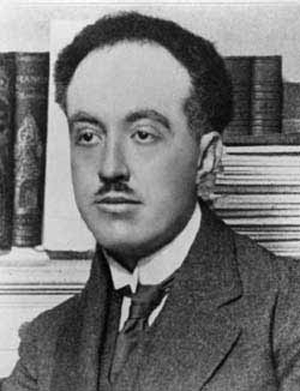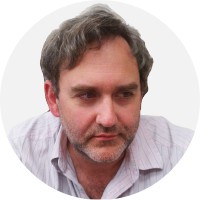The views expressed in our content reflect individual perspectives and do not represent the authoritative views of the Baha'i Faith.
When I reflect on the Baha’i teachings, which stunningly prefigure many of the discoveries of modern physics, I see an interesting pattern.
As a physicist, I’ve noticed that most of the clearest scientific expressions and explanations in the Baha’i teachings come from the writings and talks of Abdu’l-Baha. Looking carefully, those explanations usually trace back to the original concept provided by Baha’u’llah. However, ultimately Abdu’l-Baha seems uniquely capable of pulling these concepts out, explaining them in clear, modern language, and rendering them intelligible to us—or at least to me.
For example on the question of the ultimate substance of matter, in Baha’u’llah’s “Tablet of Wisdom” we can see the presence of the ideas later expressed by Abdu’l-Baha:
… He (Socrates) it is who perceived a unique, a tempered, and a pervasive nature in things, bearing the closest likeness to the human spirit, and he discovered this nature to be distinct from the substance of things in their refined form. – Baha’u’llah, Tablets of Baha’u’llah, p. 146.
This, I suspect, forms the kernel of the idea that underlies Abdu’l-Baha’s statement that:
Even the ether, the forces of which are said in natural philosophy to be heat, light, electricity and magnetism, is an intelligible and not a sensible reality. – Abdu’l-Baha, Some Answered Questions, newly revised edition, pp. 93-94.
Perhaps this alludes to the other uniquely modern ideas from the Baha’i teachings about non-existence of rest and a void, which both flow from the concept of a pervasive and spirit-like essence underlying all matter. For those reasons and from my perspective, it seems it would behoove us to pay extremely careful attention to what Abdu’l-Baha says about science and the universe, despite how deceptively simple it may sound.
With hindsight we can easily see the many important principles contained in Abdu’l-Baha’s writings and speeches—for example, the understanding that both matter and light arises from the ether, the understanding that this field represents a non-physical “intellectual reality” and that absolute rest is impossible via his statement “that motion be an inseparable concomitant of existence.” These concepts expose some of the core ideas of quantum mechanics and later field theory—which developed as guiding lights of contemporary science long after Abdu’l-Baha first expressed them.

All this makes me wonder how a scientist existing before the advent of the quantum wave function might have used Abdu’l-Baha’s statements to hasten these discoveries. One could imagine an insightful individual who might have taken Abdu’l-Baha’s statements on ether and matter to heart, and seen, as the pioneering French physicist Louis de Broglie eventually postulated, that matter might be modeled as a wave; or later understood that this same field could also explain electromagnetism. Yet still, this kind of discovery requires formulating these principles in terms of the problems and the mathematics at hand, which makes me doubt anyone will discover a fully formed theory of physics hidden in scripture. Instead, we can sometimes find principles which should inspire and hopefully point the direction towards fruitful scientific inquiry.
With that in mind, let’s take a closer look at some of the probable truths contemporary science still wrestles with and attempts to prove, and see if we can find corollaries or clues within the Baha’i teachings. Several ideas seem to be suggested in the Baha’i writings which many physicists think are true, but haven’t conclusively proven yet. I’ll list two of the most important ones here:
The Cosmos Exhibits Self-similarity
This concept perhaps should really belong in the category of known scientific facts, since this is a plainly observed phenomena of our universe, due to the nature of our physical laws. While it hasn’t yet been conclusively proven—it would be a very difficult theory to prove, after all—most scientists already accept it; and most laymen do, too. In part, it has driven the development of such emerging sciences as fractal mathematics. The Baha’i teachings express this cosmic self-similarity in terms of the obvious patterns of nature, from the smallest element to the largest:
… earthly and heavenly, material and spiritual, accidental and essential, particular and universal, structure and foundation, appearance and reality and the essence of all things, both inward and outward—all of these are connected one with another and are interrelated in such a manner that you will find that drops are patterned after seas, and that atoms are structured after suns in proportion to their capacities and potentialities. – Abdu’l-Baha, Tablet of the Universe, provisional translation.
The Cosmos is Infinite
Despite the belief that our universe originated with a singularity, scientists now have a strong suspicion that our cosmos is infinite, populated by a multi-verse. In fact, the infinite nature of the universe is now almost a requirement for many existing theories beyond the standard model. Since science centers so much on measurement, this theory also approaches impossibility in terms of proof—but the Baha’i teachings have proclaimed the infinitude of the universe since the beginning of the revelation:
Know thou that the expressions of the creative hand of God throughout His limitless worlds are themselves limitless. Limitations are a characteristic of the finite, and restriction is a quality of existent things, not of the reality of existence. – Ibid.
You May Also Like
Comments

















Dave Bohm, ( who worked, I believe at the University of Haifa ),
on some of these matters? Pilot wave etc,, especially ideas
from Undivided Universe, and Wholeness And Implicate Order
The model applies quantum correction terms to complement Einstein's theory of general relativity. The model may also account for dark matter and dark energy, resolving multiple problems at once. Faraq Ali argues that "The Big Bang singularity is the most serious problem of ...general relativity because the laws of physics appear to break down there."